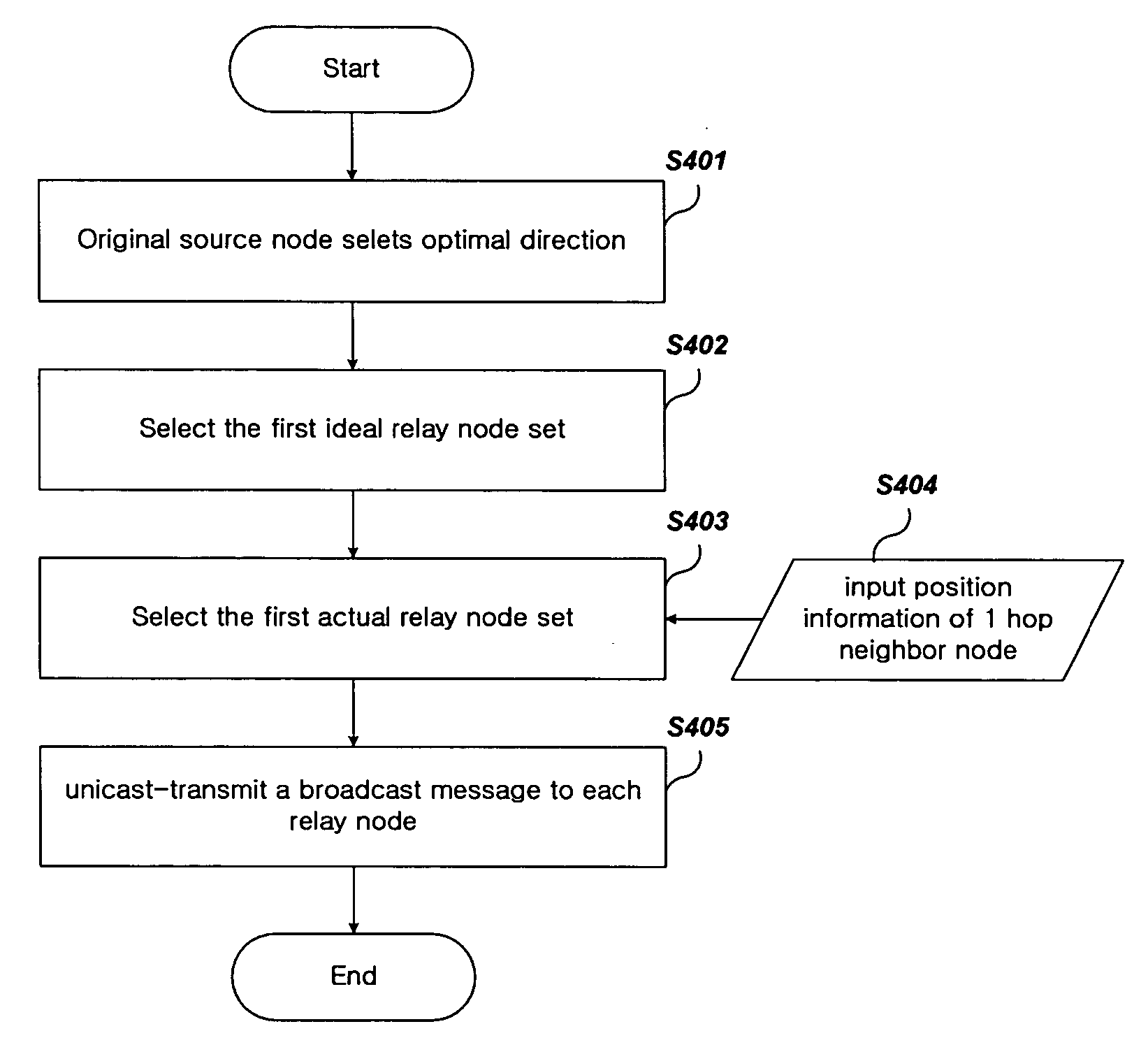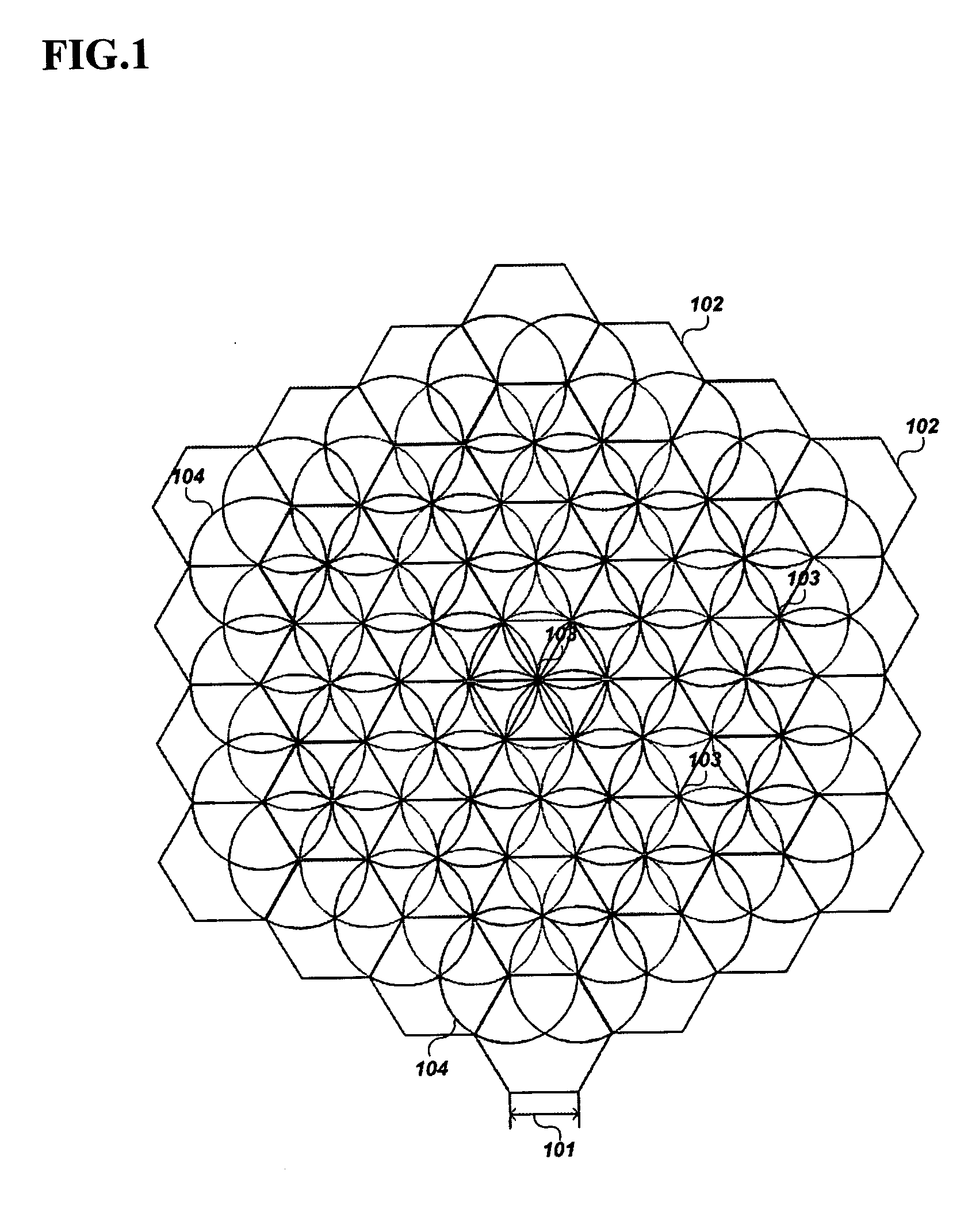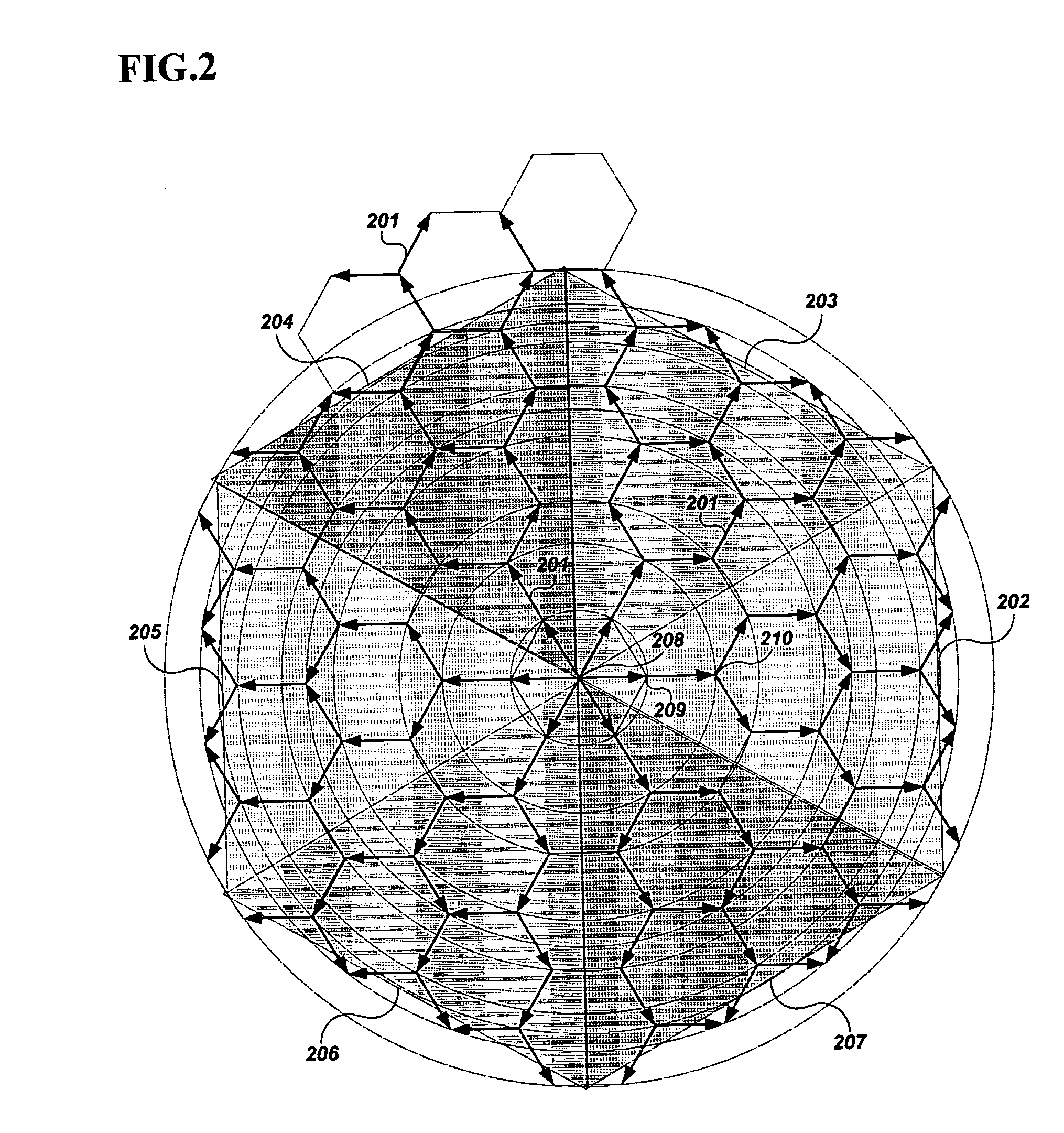Optimal direction-based flooding method for mobile ad-hoc networks
a technology of mobile ad-hoc networks and flooding methods, applied in data switching networks, frequency-division multiplex, wireless commuication services, etc., can solve problems such as contention and collision among nodes using common media, packet collision, and duplication of broadcast packets, so as to reduce the number of duplicated broadcast message relays and reduce the inefficient consumption of wireless resources
- Summary
- Abstract
- Description
- Claims
- Application Information
AI Technical Summary
Benefits of technology
Problems solved by technology
Method used
Image
Examples
Embodiment Construction
[0050] In the following detailed description, exemplary embodiments of the present invention are shown and described, by way of illustration. As those skilled in the art would recognize, the described exemplary embodiments may be modified in various ways, all without departing from the spirit or scope of the present invention. Accordingly, the drawings and description are to be regarded as illustrative in nature, rather than restrictive.
[0051] In the drawings, illustrations of elements having no relation with the present invention are omitted in order to more clearly present the subject matter of the present invention. In the specification, the same elements are denoted by the same reference numerals even though they are depicted in different drawings.
[0052] An optimal direction-based flooding method for a mobile ad-hoc network according to an exemplary embodiment of the present invention will be explained, referring to the enclosed figures.
[0053] According to an exemplary embodi...
PUM
 Login to View More
Login to View More Abstract
Description
Claims
Application Information
 Login to View More
Login to View More - R&D
- Intellectual Property
- Life Sciences
- Materials
- Tech Scout
- Unparalleled Data Quality
- Higher Quality Content
- 60% Fewer Hallucinations
Browse by: Latest US Patents, China's latest patents, Technical Efficacy Thesaurus, Application Domain, Technology Topic, Popular Technical Reports.
© 2025 PatSnap. All rights reserved.Legal|Privacy policy|Modern Slavery Act Transparency Statement|Sitemap|About US| Contact US: help@patsnap.com



